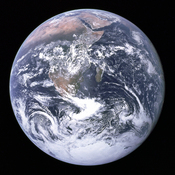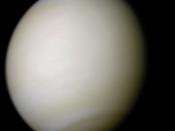Introduction
By exploring our solar system we widen our perspectives and gain a better understanding of the mechanics of worlds in general. An excellent way to explore worlds is through comparative planetology where we learn more about a planet in context or comparison to another. Venus is one of many planets in our solar system. Its geologic features are the product of physical and chemical processes that operate elsewhere in the universe. In many ways Earth and Venus are very similar. Both planets were formed at the same time from the same celestial cloud and planetary materials. In other ways they are very different. We will highlight these similarities and differences using the planet Earth as our model. The planet Earth is an ideal model, as we know much more about our home planet Earth than any other.
Each planet has unique characteristics due to the intensity and length of time forming processes have operated.
We will look at and explain Venus' characteristics or properties. The properties will cover size, chemical compositions, rotation and atmosphere, as well as phases.
Venus Properties
The planet Venus is one of nine planets that orbit the Sun in our solar system. It is the second planet from the Sun and closest to Earth. Due to this location, it is the brightest star in our sky. As with the Earth, there are four key formation properties of the planet Venus. The first one is size or mass, the second one is distance from the sun, the third is chemical composition, and the forth is the rotation rate. We will briefly cover examples of each.
Size / Mass
Venus is about 12,104 km in diameter. The size of Venus is 95% the size of Earth. The mass is about 4.86 x 1024 kg (or 0.82 Earth...



Venus - SCI360 Compartive Planetology
This is an excellent essay and matches the deliverables for the week 2 assigment for SCI 360. I found the author's writing style easy to ready and interesting. The structure was very well laid out. I liked it.
2 out of 3 people found this comment useful.